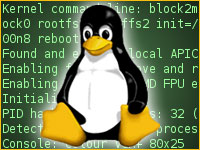
The latest version of the Linux kernel was released on Sunday, offering not just a host of bug fixes but also new features designed for multicore environments.
Most notably, tapping technology contributed by Google, Linux version 2.6.35 includes Receive Packet Steering (RPS) and Receive Flow Steering (RFS) features that help to spread network handling across the CPUs available in the system, according to the Kernel Newbies website.
In his announcement of the release, Linux creator Linus Torvalds referred readers to the Kernel Newbies site for a full description of its features.
Tripled Performance
The addition of RPS and RFS technology “effectively emulates what a multiqueue NIC can provide, but instead it is implemented in software and for all kind of network hardware, including single queue cards and not excluding multiqueue cards,” Kernel Newbies explained.
A benchmark test, in fact, recently showed how an eight-core Intel CPU-based server with an Intel e1000e network adapter went from 104K tps at about 30 percent CPU usage to 303K tps at 61 percent CPU usage when using RPS and RFS.
In other words, the technology almost tripled performance while doubling overall system utilization, Charles King, principal analyst at Pund-IT, told LinuxInsider.
“The context for this is that the industry and businesses are firmly moving into a world where multicore technology is the processor technology of choice across the x86 world — it doesn’t matter if you’re using Intel or AMD,” King explained.
‘Efficiency Is the Name of the Game’
The beauty of multicore technology is that it can offer advantages in both performance and system efficiency, as seen in the benchmark tests, he pointed out.
“What the Google technology does is, it helps identify the network traffic and then balances that against an appropriate number of cores on the given system in order to maximize performance,” said King.
“So, is this a big deal? Yes and no,” he asserted.
“It’s incredibly geeky, but at end of the day, the new kernel and RPS and RFS technologies from Google will help Linux users make sure they are getting the most out of their x86-based networks,” King concluded. “Efficiency is the name of the game in the data center these days.”
Enhanced Graphics Stack
Coming less than three months after the release of the previous iteration, 2.6.34, the new version also offers Btrfs improvements including support for Direct I/O, which is used to bypass the filesystem cache, and complete -ENOSPC support.
An experimental XFS delayed logging feature was added to the new version, as was a KDB kernel debugger front end, a variety of perf improvements, enhancements to the graphics stack, and a memory compaction mechanism.




















































